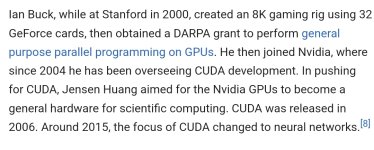theblackangus
Slightly less n00b
- Joined
- Apr 16, 2020
- Messages
- 106
- Reaction score
- 88
Nah, I mean AMD. I find it difficult to understand: sell your tech in consoles for.... Some dollars per console? Granted yes its millions of consoles I get that but this is
vs risk a little by cutting margins in pc and making way more competituve products, at like still more than a few bucks, and remain relevant.
They dont build anything, not the chips, not the cards, nothing, just like with consoles.
Strategy would be aiming for production runs relatively short, in slightly older process, see how it goes every 6 months, renhash, produce again so.on, short contracts/ production runs at x number of units so.on.
It doest have to ever be an ' now im broke' risk for them, for going lower margin.
Market share matters, a lot. They shoukd be fighting way harder than what they are.
I think history shows that AMD providing better performance/$ doesn't gain them market share.
The 3050, while costing more was outselling AMD's better performing competition.
I would be nice if AMD could gain market share but them doing that by pricing has failed quite often.

